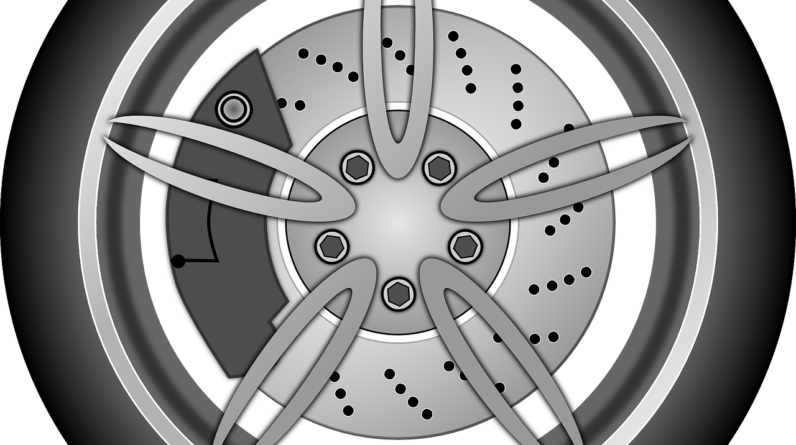
Incorrectly inflated tires increase rolling resistance, affecting fuel efficiency, performance, and safety. Learn how proper tire pressure can make your drive smoother and safer.
Let’s dive into a topic that impacts both our driving experience and our vehicle’s efficiency: tire inflation. In “Incorrectly Inflated Tires Increase Surface Rolling Resistance,” we explore how the right tire pressure can make a world of difference. When our tires are improperly inflated, whether too high or too low, we face increased rolling resistance. This not only affects the performance and longevity of our tires but also impacts fuel consumption and overall safety. By understanding how to maintain optimal tire pressure, we can improve our driving experience and make our journeys smoother and more economical.
Have you ever wondered how the air pressure in your tires impacts your vehicle’s performance and safety? If so, you’re not alone. Many of us overlook this crucial aspect of car maintenance, even though it plays a significant role in how our vehicle handles on the road. Let’s dive into this topic and understand how incorrectly inflated tires increase surface rolling resistance and impact our driving experience.
Understanding Rolling Resistance
What Is Rolling Resistance?
Rolling resistance refers to the energy lost when a tire rolls on a surface. This loss of energy is due to the deformation of the tire as it makes contact with the road. When we drive, our tires continuously deform and reform as they roll, which consumes energy and affects fuel efficiency.
Why Should We Care About Rolling Resistance?
Surface rolling resistance impacts several aspects of our vehicle’s performance, including fuel economy, tire wear, and overall comfort. By understanding how it works, we can make informed decisions about tire maintenance and choices.
The Basics of Tire Inflation
What Does Proper Tire Inflation Mean?
Proper tire inflation means maintaining the air pressure within the manufacturer’s recommended range. Typically, this information is available in the owner’s manual or on a sticker inside the driver’s side door.
| Tire Pressure (PSI) | Effect on Performance |
|---|---|
| Correctly Inflated | Optimal performance, fuel efficiency, and safety |
| Under-Inflated | Increased rolling resistance, decreased fuel efficiency, higher risk of accidents |
| Over-Inflated | Decreased traction, uneven tire wear, rougher ride |
Why Is Tire Inflation Important?
The right tire pressure ensures that our tires have the optimal contact patch with the road, maintaining performance and safety. Incorrectly inflated tires can lead to lower gas mileage, premature tire wear, and even blowouts.

The Science Behind Incorrect Tire Inflation
How Under-Inflated Tires Increase Rolling Resistance
Under-inflated tires have a larger contact patch with the road, causing more deformation as they roll. This extra deformation leads to higher rolling resistance, meaning the engine has to work harder to maintain speed.
How Over-Inflated Tires Affect Rolling Resistance
While over-inflated tires have less rolling resistance compared to under-inflated ones, they can still negatively impact our driving experience. The reduced contact area decreases traction and can make the ride less comfortable and less safe.
Impact on Fuel Efficiency
Fuel efficiency is directly related to rolling resistance. Higher rolling resistance means the engine has to consume more fuel to move the same distance. Studies show that a 10% decrease in tire pressure can lead to a 2% decrease in fuel efficiency.
Real-World Impacts
Handling and Safety Concerns
Incorrectly inflated tires compromise handling. Under-inflated tires can make steering sluggish and less responsive, while over-inflated tires can make the vehicle feel twitchy and unpredictable. Both scenarios increase the risk of accidents.
Impact on Tire Longevity
Tire wear patterns are also affected by incorrect inflation. Under-inflated tires tend to wear out on the edges, while over-inflated tires wear down the center tread. Both conditions reduce the overall lifespan of our tires, leading to more frequent replacements and higher costs.
Comfort and Ride Quality
Our vehicle’s suspension is designed to work optimally with properly inflated tires. Incorrect air pressure can lead to a harsher ride and reduced comfort. Over time, this can also put additional stress on other components of the vehicle’s suspension system.

Common Mistakes and Myths
Mistakes in Tire Inflation
One common mistake is relying solely on visual checks to determine if a tire is properly inflated. Tires can appear fine even when they are under or over the recommended pressure. Using a reliable tire pressure gauge is essential for accurate readings.
Myths About Tire Pressure
There are several myths about tire pressure that can lead to improper maintenance:
- The Tire’s Maximum PSI Is Optimal: This is false. The maximum PSI is just the limit, not the recommended pressure.
- All Tires Have the Same Ideal Pressure: Different tires and vehicles have different optimal pressures. Always refer to the manufacturer’s guidelines.
- Frequent Pressure Checks Are Unnecessary: Tires naturally lose air over time. Routine checks are important to maintain proper inflation.
How to Maintain Proper Tire Inflation
Regular Tire Pressure Checks
Regularly checking our tire pressure is a simple yet effective way to ensure they are properly inflated. Aim to check the pressure at least once a month and before long trips.
Seasonal Adjustments
Temperature changes can affect tire pressure. For every 10°F drop in temperature, tire pressure can decrease by about 1 PSI. We should adjust tire pressure accordingly with the change of seasons.
Investing in Quality Tools
Investing in a good tire pressure gauge and an air compressor can make it easier to maintain optimal tire pressure. Digital gauges often provide more accurate readings than analog ones.

Conclusion
Understanding the importance of proper tire inflation isn’t just about optimizing performance—it’s about safety, longevity, and fuel efficiency. By ensuring that our tires are correctly inflated, we can significantly reduce surface rolling resistance, save on fuel costs, extend tire life, and improve overall driving comfort. Let’s make tire maintenance a regular part of our vehicle care routine. After all, a little attention to tire pressure can go a long way in enhancing our driving experience.






